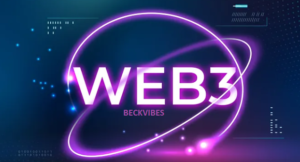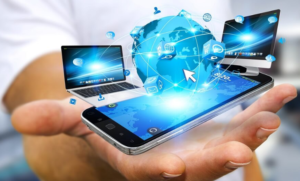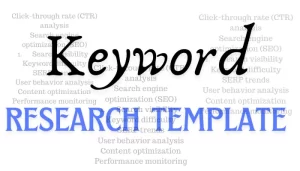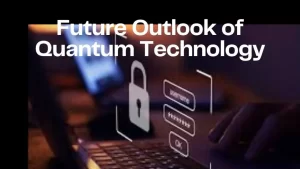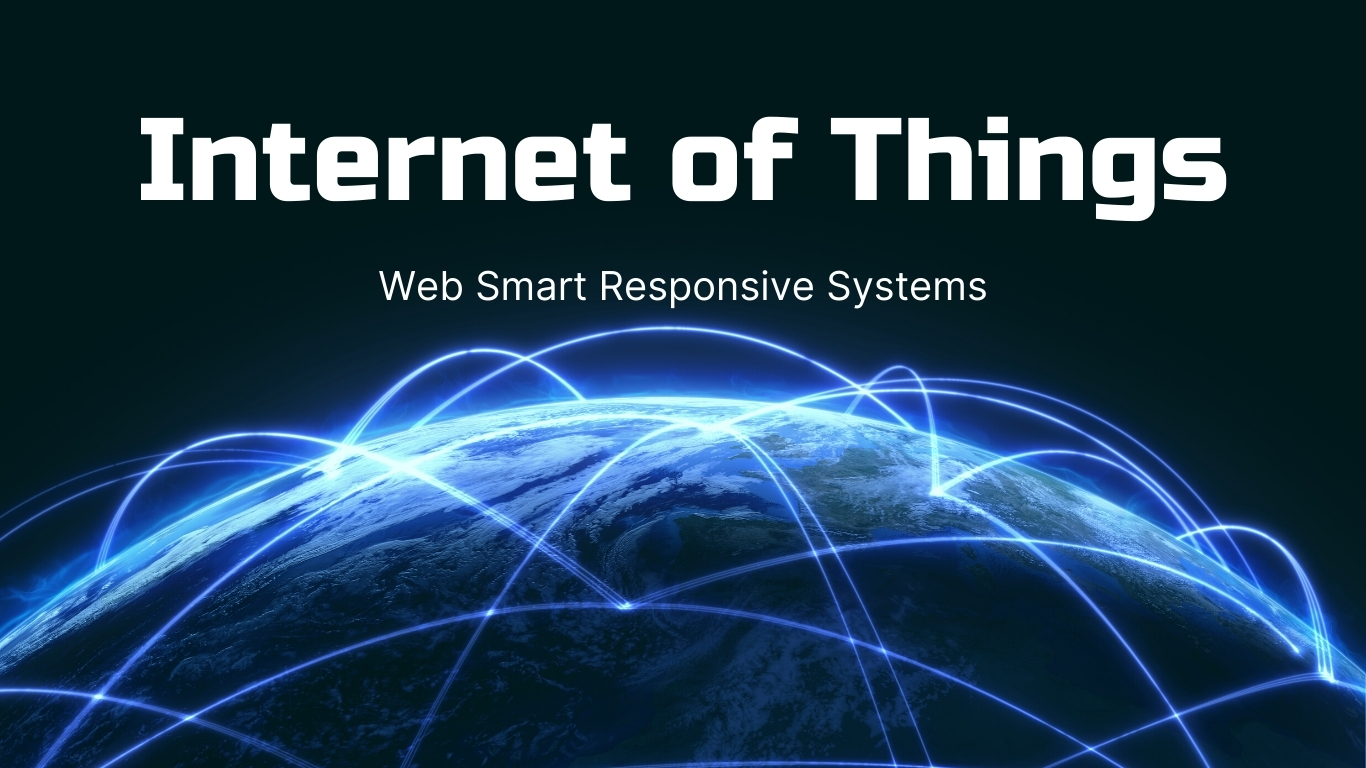
The Internet of Things (IoT) refers to a wide range of comprehensive studies, including connection, data analytics, security, and applications in a variety of industries.
Research examines the impact of IoT on smart cities, healthcare, agriculture, and industrial processes, addressing issues such as interoperability and privacy.
Emerging technologies such as edge computing and 5G improve IoT capabilities, making it a dynamic topic for in-depth research.
An Introduction to the Internet of Things
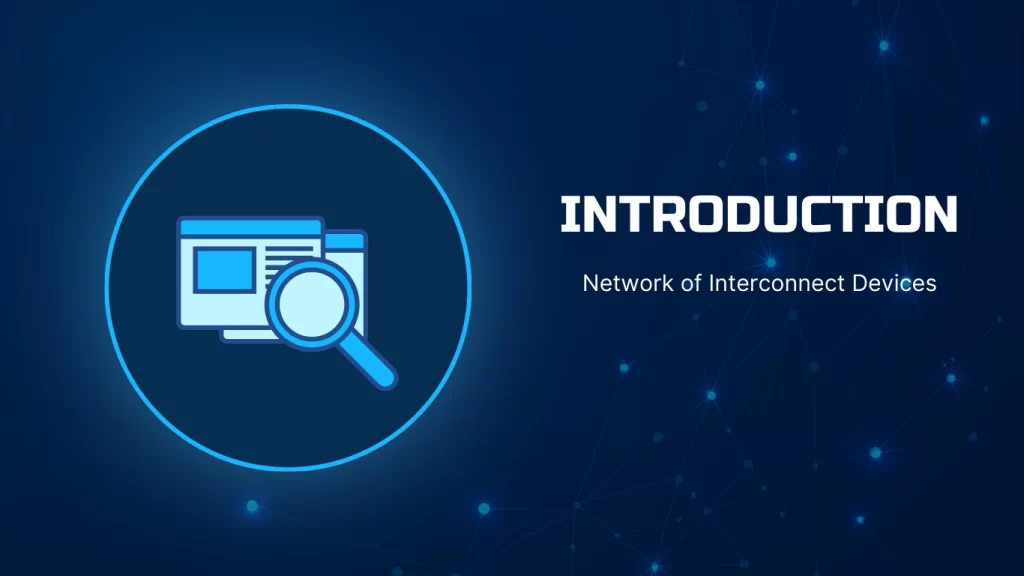
This interconnectedness allows these devices to fluidly communicate and share information, resulting in a web of smart, responsive systems.
What is an Internet of Things?
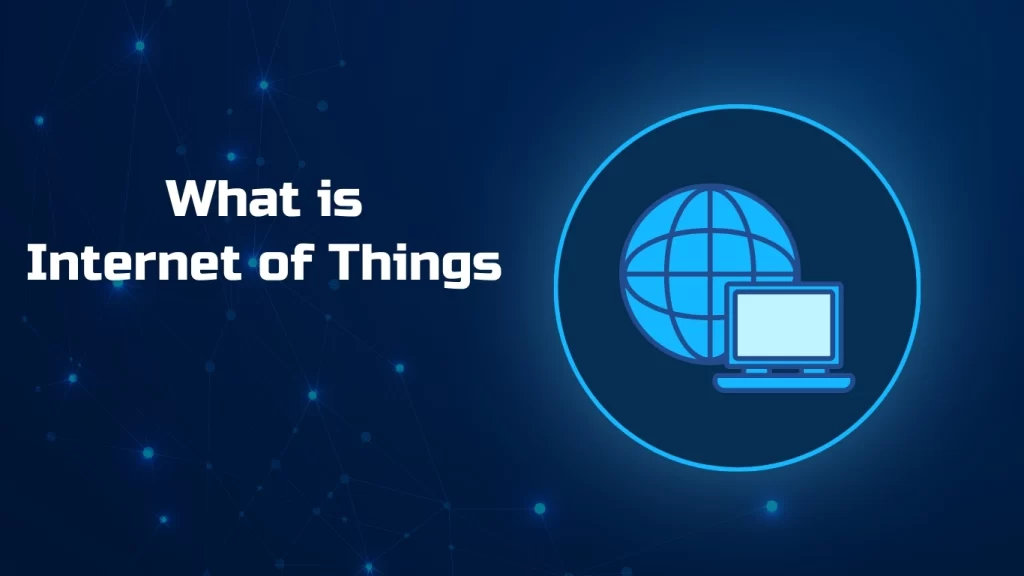
The Internet of Things (IoT) refers to a network of interconnected physical devices, automobiles, appliances, and other items equipped with sensors, software, and communication capabilities.
These gadgets capture and exchange data, allowing for smooth connections and interactions between them.
The main purpose of the IoT is to enable smarter, more efficient processes and better decision-making by leveraging the data created by these linked devices.
The importance and relevance of comprehensive studies on IoT
Comprehensive research on the Internet of Things (IoT) is critical for various reasons.
For starters, they help us grasp and realize the full potential of IoT technology, which can lead to enhanced efficiency and innovation in a variety of industries.
Second, addressing security and privacy concerns is critical for ensuring the responsible and ethical implementation of IoT technology.
Furthermore, as IoT evolves, extensive investigations help to define standards and protocols that promote interoperability among devices and systems.
Finally, intensive study is required to gain a better knowledge of IoT and maximize its benefits while minimizing any hazards.
A brief overview of the Internet of Things (IoT)
The Internet of Things (IoT) is a network of interconnected physical devices equipped with sensors, software, and communication capabilities. These gadgets may collect and share data, allowing for seamless connection and interaction. IoT has many applications, including smart homes, cities, industrial processes, and healthcare.
The goal is to improve efficiency, automation, and decision-making by using data from these linked devices. As IoT technologies progress, they have the potential to alter how we live and work, resulting in a more connected and smarter society.
Benefits of the Internet of Things
The Internet of Things (IoT) provides various benefits, including:
Efficiency:
IoT allows for the automation and optimization of operations, resulting in enhanced efficiency in a variety of businesses and in everyday life.
Data-driven Insights:
Connected devices generate massive volumes of data, delivering useful insights for better decision-making and strategy development.
Savings on costs:
IoT can assist in reducing operating costs and resource waste by automating and providing real-time monitoring.
Improved Quality of Life:
IoT raises the standard of living in smart cities and homes by enhancing sustainability, safety, and convenience.
Increased Efficiency:
Industrial IoT applications streamline operations, resulting in higher productivity in manufacturing, logistics, and other industries.
Remote Monitoring and Control:
The Internet of Things makes it possible to remotely monitor and control devices, which simplifies system maintenance and administration from any location.
Novel Business Models and Innovation:
By facilitating the creation of novel goods and services as well as creative business models, the Internet of Things fosters innovation.
Impact on the Environment:
IoT can help improve environmental sustainability by improving resource utilization and lowering energy consumption.
Improvements in Healthcare:
The IoT enables remote patient monitoring, individualized treatment regimens, and better healthcare delivery.
Supply Chain Optimization: IoT technologies improve visibility and traceability in supply chains, decreasing delays and errors while increasing overall efficiency.
Automation in Agriculture:
IoT sensors in agriculture monitor soil conditions, weather patterns, and crop health, helping farmers improve irrigation, fertilization, and pest control methods.
Retail Optimization:
IoT devices in retail enhance the overall shopping experience by enabling smart shelving, streamlining inventory management, and gathering data on consumer behavior.
Frequently Asked Questions about Internet of Things
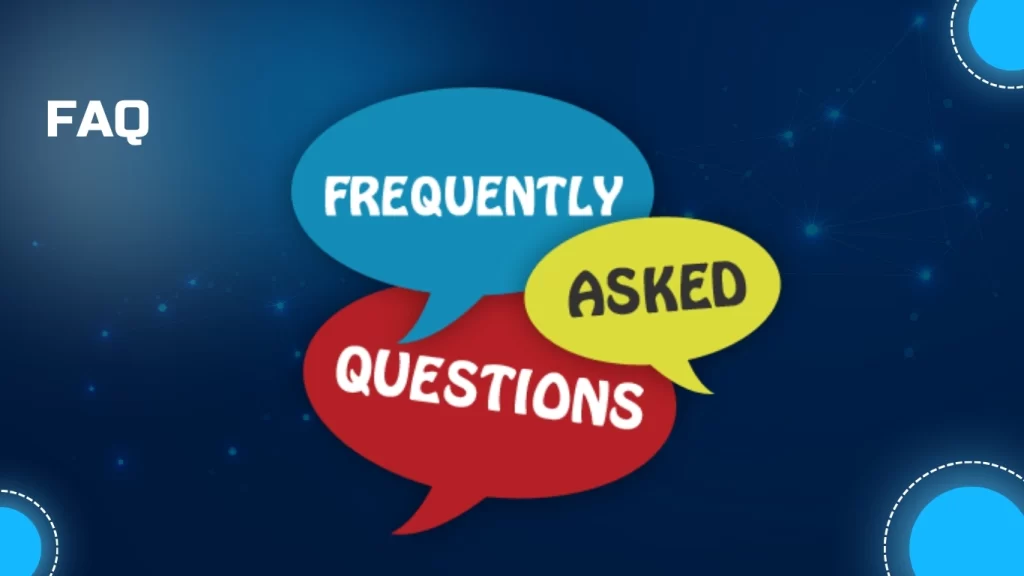
What exactly is the Internet of Things?
Answer: IoT refers to a network of interconnected devices equipped with sensors and communication capabilities.
How does IoT work?
Answer: IoT devices collect data via sensors, connect with one another or a central system, and use that data for a variety of purposes.
What are some examples of Internet of Things (IOT) devices?
Answer: Common examples include smart thermostats, wearable fitness trackers, networked home appliances, industrial sensors, and smart city infrastructure.
What are the primary challenges of the IoT?
Answer: Security concerns, interoperability issues, data privacy, and the necessity for defined protocols are among the challenges.
How does the IoT affect privacy and security?
Answer: The Internet of Things poses data privacy concerns since devices collect and share personal information. Unauthorized device access is a security risk and a potential bridge.
What is the role of data analytics in the Internet of Things?
Answer: In IoT data analytics, enormous amounts of data created by devices are processed and analyzed to derive valuable insights for decision-making.
How does the IoT work in smart homes?
Answer: IoT gadgets in smart homes include smart thermostats, lights, security cameras, and voice-activated assistants, which improve convenience and automation.
What is the Industrial IoT (IIoT)?
Answer: IIoT refers to the application of IoT technology in industrial settings for activities such as predictive maintenance, real-time monitoring, and increased operational efficiency.
What are the possible future advances in IoT?
Answer: Future trends could include advances in edge computing, 5G technology, increasing AI integration, and the spread of IoT applications across industries.
How can organizations gain from deploying Internet of Things solutions?
Answer: Businesses can profit from IoT by increasing efficiency, lowering costs, improving customer experiences, and gathering insights through data-driven decision-making.
Increased efficiency and productivity in various industries
The Internet of Things helps to enhance efficiency and productivity in numerous industries by:
Maintaining Predictiveness:
Sensors on machinery allow for real-time monitoring, prediction of maintenance requirements, downtime reduction, and equipment performance optimization.
Supply Chain Enhancement:
IoT helps track and manage inventories, monitor logistics in real time, and improve overall supply chain visibility, resulting in increased efficiency.
Smart industrial:
Industrial IoT (IIoT) automates and connects industrial processes, improving precision, eliminating errors, and increasing total productivity.
Energy Management:
Smart sensors and gadgets in buildings and factories improve energy consumption, resulting in cost savings and more environmentally friendly operations.
Healthcare Efficiency:
IoT applications in healthcare include remote patient monitoring, asset tracking, and smart healthcare systems, which improve patient care and operational efficiencies.
Agricultural Automation:
IoT sensors in agriculture monitor soil conditions, weather patterns, and crop health, helping farmers improve irrigation, fertilization, and pest control methods.
Retail Optimization:
IoT devices in retail improve inventory management, enable smart shelving, and provide information on customer behavior, thus improving the whole shopping experience.
Smart Cities:
The IoT contributes to effective urban management through applications such as smart traffic management, trash management, and public safety systems, resulting in better city services.
Connected Vehicles:
The Internet of Things in transportation enables real-time vehicle monitoring, route optimization, fuel consumption reduction, and improved fleet management.
Remote Monitoring and Control:
The Internet of Things (IoT) enables remote monitoring and control of numerous processes and systems, allowing for faster problem resolution and decreasing the need for physical presence.
Enhanced convenience and automation in everyday life
IoT improves convenience and automation in daily life through:
Smart Home Devices:
Internet of Things (IoT) devices such as smart thermostats, lights, and security cameras allow for remote control, scheduling, and automation, increasing comfort and security.
Voice-Activated Assistants:
Virtual assistants, such as Amazon Alexa and Google Assistant, use IoT to manage smart devices, answer questions, and do activities via voice commands, increasing convenience.
Connected Appliances:
Smart appliances, such as refrigerators and washing machines, can be remotely monitored and operated, providing flexibility and energy efficiency.
Wearable Technology:
Fitness trackers and smartwatches employ IoT to track health parameters, provide real-time feedback, and promote healthier living.
Smart Lighting Systems:
IoT-enabled lighting systems can make automated modifications based on occupancy, time of day, or user preferences, maximizing energy efficiency and convenience.
Location-Based Services:
IoT technology enables location-based services, which improve convenience through features such as smart navigation, geofencing, and location-aware reminders.
Connected Cars:
IoT in cars enables features such as GPS navigation, vehicle diagnostics, and smart entertainment systems, resulting in a more connected and automated driving experience.
Home Security Systems:
IoT-based security systems provide remote monitoring, alerts, and automation of surveillance cameras and alarms, which improves home safety.
Health Monitoring Devices:
Wearable health devices and IoT-connected medical equipment enable people to track and manage their health, encouraging proactive care.
Smart Retail Experiences:
The IoT improves retail by introducing features such as contactless payments, smart shelves, and personalized shopping experiences, making the entire shopping process more convenient and efficient.
Improved decision-making and data analysis capabilities
The IoT improves decision-making and data analysis capabilities by:
Real-time Data:
IoT devices produce real-time data, allowing organizations and consumers to make educated decisions quickly.
Predictive Analytics:
By evaluating historical and real-time data, IoT enables predictive analytics, which aids in anticipating patterns, potential concerns, and optimizing future actions.
Remote Monitoring:
The Internet of Things (IoT) offers remote monitoring of assets, systems, and processes, allowing for rapid decision-making without physical presence.
Optimized Operations:
Data collected from IoT devices may be examined to uncover inefficiencies, streamline procedures, and increase overall performance.
Customer Insights:
Retailers and service providers use IoT-generated data to better understand customer behavior, preferences, and trends, which helps them design focused initiatives.
Supply chain visibility:
The Internet of Things improves supply chain visibility by allowing for real-time inventory tracking and monitoring, minimizing delays, and boosting logistical decision-making.
Quality Control:
In production, IoT sensors can check product quality in real time, allowing for speedy modifications and fault reduction.
Energy Efficiency:
IoT helps improve energy management by analyzing data to identify areas for optimization and cost-cutting strategies.
Healthcare Decision Support:
IoT in healthcare provides data-driven insights to medical practitioners, assisting with diagnosis, treatment planning, and individualized patient care.
Smart Agriculture:
By evaluating data from agricultural sensors, farmers may make data-driven decisions about irrigation, fertilization, and crop management to increase yields.
Challenges in Internet of Things Implementation
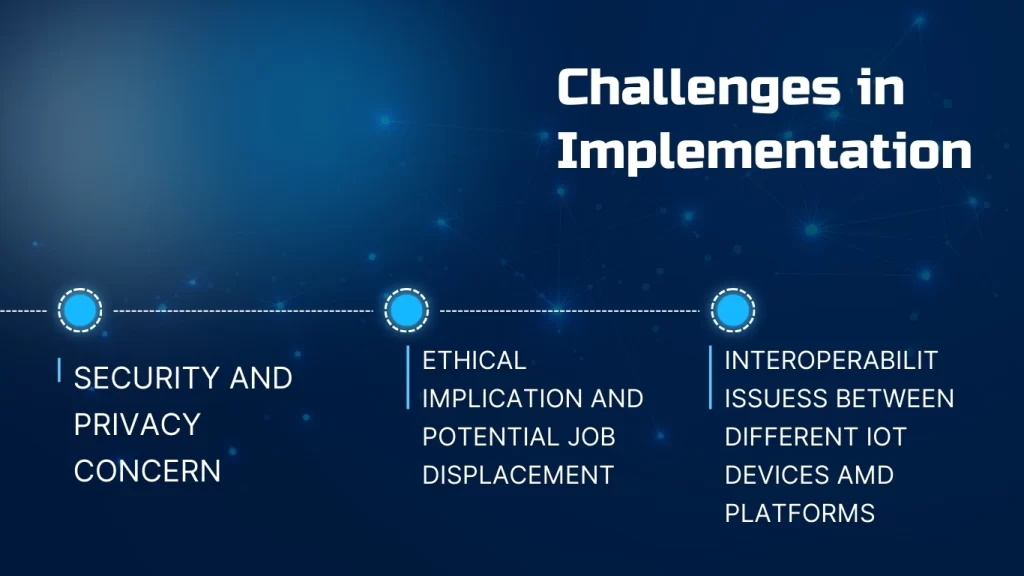
The challenges in IoT implementation include:
Security Concerns:
IoT devices may be subject to cyberattacks, jeopardizing data privacy and system integrity and potentially allowing unauthorized access.
Interoperability:
A lack of standardization can cause compatibility concerns across various IoT devices and platforms, preventing seamless communication and integration.
Data Privacy:
The large volume of data generated by IoT devices raises issues about how it is stored, processed, and shared, potentially leading to privacy violations.
Scalability:
As IoT networks expand, expanding infrastructure to accommodate the growing number of devices and data can be difficult, hurting overall system performance.
Reliability and Connectivity:
Maintaining consistent connectivity and dependable communication between devices, particularly in remote or hostile areas, can be difficult.
Many IoT devices run on batteries, so minimizing power usage is crucial for extending device lifespan and reducing the need for frequent replacements.
Implementation costs:
The initial investment in IoT infrastructure, sensors, and connection solutions can be expensive, making it difficult for some firms to adopt.
Regulatory Compliance:
Meeting numerous regulatory standards and compliance obligations, particularly those related to data protection and privacy, complicates IoT adoption.
Integrating IoT solutions into current systems and workflows can be complicated, necessitating careful planning and cooperation to avoid disruptions.
Ethical Considerations:
The ethical use of data obtained by IoT devices, especially in sensitive areas like healthcare and surveillance, creates significant ethical concerns that must be addressed.
Security and privacy concerns
Security and privacy concerns on the Internet of Things include:
Unauthorized Access:
IoT devices are vulnerable to unauthorized access, which can result in data breaches, device functionality manipulation, or malicious assaults.
Data Encryption:
Ensuring strong encryption for data in transit and at rest is critical for protecting sensitive information from interception or unauthorized access.
Device Authentication:
Weak device authentication procedures might allow unauthorized devices to access IoT networks, jeopardizing the system’s overall security.
Inadequate Update Means:
IoT devices may lack suitable means for software updates and patches, making them vulnerable to known security problems.
Insufficient network security:
Insecure network connections between IoT devices and cloud platforms can be abused, putting the confidentiality and integrity of sent data at risk.
Data privacy breach:
The vast amount of data generated by IoT devices may contain sensitive personal information, prompting worries about how it is stored, processed, and shared, potentially leading to privacy violations.
Lack of Standardization:
The absence of established security protocols and frameworks can lead to discrepancies, making it difficult to apply consistent security measures across varied IoT ecosystems.
Device Lifecycle Management:
Managing the security of IoT devices throughout their lifecycle, including deployment, operation, and decommissioning, is critical for preventing vulnerabilities from recurring.
Physical Security:
Physical access to IoT devices might be a security issue. Unauthorized physical tampering with equipment might jeopardize its functionality or permit harmful activity.
Regulatory Compliance:
Adherence to data protection and privacy regulations is critical for avoiding legal consequences and maintaining trust in IoT devices. Compliance criteria may vary by geography and industry.
Ethical implications and potential job displacement
Ethical considerations and potential job displacement in the Internet of Things include:
Privacy questions:
The acquisition of extensive personal data by IoT devices creates ethical questions about user privacy, necessitating careful management and open policies.
Surveillance and monitoring:
The widespread use of IoT for surveillance raises ethical concerns about individual rights, consent, and the balance of public safety and personal privacy.
Data Ownership:
Determining who owns and manages the data generated by IoT devices is an ethical question, especially when it concerns personal or sensitive information.
Bias in Data:
If IoT systems employ biased data, the results may be discriminatory, perpetuating existing disparities and raising ethical questions about fairness and justice.
Job Displacement:
Automation enabled by IoT may result in job displacement in some industries, generating ethical concerns about the impact on employment and the necessity for retraining programs.
Security and safety risks:
Ethical considerations arise when IoT devices, if compromised, endanger the safety and security of individuals, businesses, and key infrastructures.
Unequal Access:
If access to IoT devices is not equitable, the digital divide could increase, raising ethical concerns about social and economic injustice.
Environmental Impact:
The manufacture, usage, and disposal of IoT devices can all contribute to electronic waste and environmental deterioration, prompting ethical questions about sustainability.
Informed Consent:
Users should be fully informed about IoT device capabilities and data practices in order to provide informed consent and ensure the ethical use of their personal information.
Algorithmic Decision-Making:
Ethical concerns occur when automated decision-making procedures based on IoT data lack transparency, accountability, or justice, possibly impacting people’s lives without clear oversight.
Interoperability issues between different IoT devices and platforms
Interoperability difficulties between different IoT devices and platforms provide hurdles because:
Diverse Standards:
The lack of uniform standards for communication and data exchange among IoT devices causes compatibility concerns, preventing smooth integration.
Fragmented Ecosystems:
The IoT landscape is made up of a variety of manufacturers and platforms, resulting in fragmented ecosystems in which devices from different suppliers struggle to operate together effectively.
Security Standards:
Differences in security implementations across devices and platforms can lead to vulnerabilities that jeopardize the overall security of interconnected systems.
Communication Protocols:
Variability in the communication protocols used by IoT devices might inhibit interoperability, necessitating complicated middleware solutions to bridge the gap.
Data Formats:
Differences in data formats and structures can cause difficulties when attempting to communicate information between devices and systems, compromising data consistency and interpretation.
Firmware and software updates that are inconsistent among devices can lead to compatibility issues and security concerns.
Scalability Challenges:
As IoT ecosystems expand, guaranteeing interoperability at scale becomes increasingly difficult, particularly when working with a large number of devices with diverse capabilities.
Vendor Lock-In:
While certain systems are designed to work effortlessly with devices from the same vendor, connecting with devices from different manufacturers can be difficult, potentially leading to vendor lock-in.
Complex Integration:
Integrating multiple IoT devices into a unified system may necessitate tremendous work and resources, resulting in delays and increased implementation costs.
Current Applications of the IoT
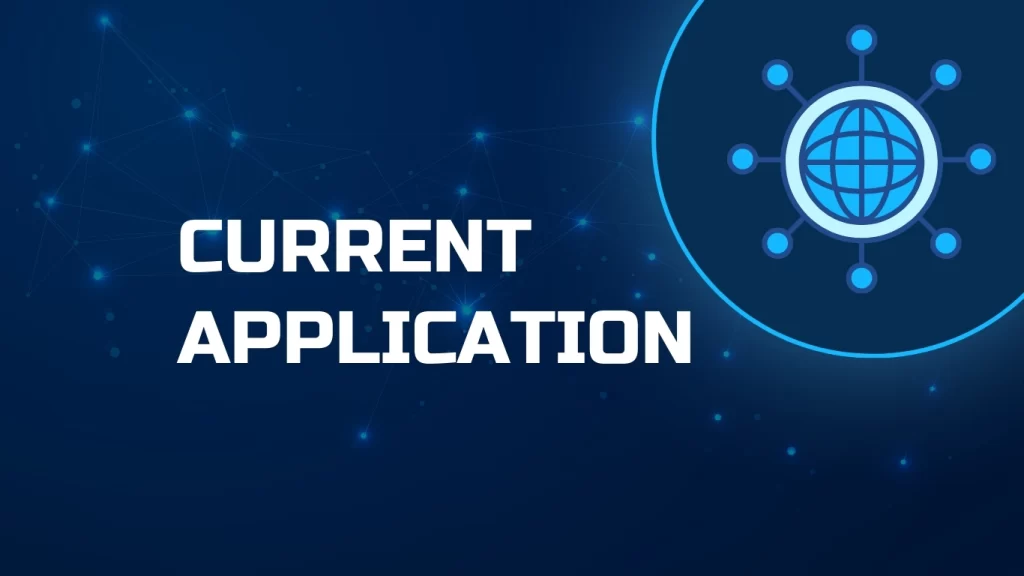
Current IoT applications span a variety of industries, including:
Smart Home Automation: Internet of Things (IoT) gadgets such as smart thermostats, lighting, and security cameras increase family convenience and security.
Wearable Health Devices:
Fitness trackers and smartwatches track health metrics in real time, allowing users to monitor and enhance their well-being.
Industrial IoT (IIoT): In manufacturing, IoT is utilized for predictive maintenance, real-time monitoring, and overall process optimization.
Smart Cities:
IoT technology helps with urban management through applications such as smart traffic lights, trash management systems, and environmental monitoring.
Agriculture:
IoT sensors track soil conditions, weather patterns, and crop health, allowing farmers to improve irrigation, fertilization, and insect control.
Connected Vehicles:
IoT applications in automobile systems include GPS navigation, real-time vehicle diagnostics, and intelligent entertainment systems.
Healthcare:
IoT applications in healthcare include remote patient monitoring, smart medical devices, and individualized treatment programs.
Retail:
The IoT improves shopping experiences by enabling contactless payments, smart shelves, and targeted marketing based on user behavior.
Logistics & Supply Chain:
The Internet of Things offers real-time shipment tracking, inventory management, and overall supply chain process improvement.
Smart lights:
IoT-enabled bulbs and switches enable users to remotely control lights, create schedules, and adjust brightness based on their preferences.
Smart Thermostats:
These devices effectively regulate house temperature by learning user preferences, automatically altering settings, and allowing remote control via smartphones.
Smart Security Systems:
IoT-enabled security cameras, doorbell cameras, and motion sensors offer real-time monitoring, alerts, and remote access to improve home security.
Smart Locks:
These devices enable customers to remotely control and monitor access to their homes, increasing security and convenience with features such as keyless entry.
Smart Speakers and Voice Assistants:
Amazon Echo and Google Home use voice commands to manage smart home devices, play music, and deliver information.
Smart Appliances:
IoT-enabled appliances, such as refrigerators, ovens, and washing machines, provide remote monitoring, scheduling, and energy efficiency.
Smart Blinds and Shades:
Automated window coverings can be operated remotely or programmed to change depending on the time of day, sunshine, or user preferences.
Smart Cameras and Video Doorbells:
Video security cameras with IoT capabilities enable homeowners to remotely monitor their property and receive notifications for suspicious activity.
Smart Sensors:
Various sensors, such as motion detectors, door/window sensors, and water leak detectors, give real-time data to improve security and efficiency.
Home Energy Management:
IoT devices monitor and control energy consumption, helping to improve energy efficiency using features such as smart thermostats, smart plugs, and solar energy systems.
These technologies work together to create a connected and automated environment that gives homeowners more control, saves money on energy, and provides peace of mind.
Industrial IoT and the concept of Industry 4.0
Industrial IoT and the concept of Industry 4.0 are inextricably linked, representing the integration of digital technology into industrial processes to create a more connected, efficient, and intelligent manufacturing environment. Here are the essential features of both:
Industrial Internet of Things:
IIoT is the use of networked sensors, devices, and systems in industrial settings to gather, analyze, and share data.
Connectivity:
IIoT allows for seamless connection between machines, equipment, and systems, resulting in increased automation and real-time monitoring.
Data Analytics:
The huge amount of data created by IIoT devices enables advanced analytics, predictive maintenance, and process optimization.
Efficiency:
The IIoT intends to improve operational efficiency, reduce downtime, and increase overall productivity in manufacturing and industrial activities.
Industry 4.0:
Definition:
Industry 4.0 is a broad term that refers to the fourth industrial revolution, which is distinguished by the integration of digital technology, automation, and data interchange in manufacturing.
Key technologies:
IoT, AI, cloud computing, big data analytics, and cyber-physical systems are all examples of Industry 4.0 technology.
Smart Factories:
Industry 4.0 anticipates the development of smart factories in which machines, goods, and systems interact and collaborate, resulting in a more flexible and responsive manufacturing environment.
Cyber-Physical Systems:
These systems combine physical processes with digital technologies, enabling real-time monitoring, control, and optimization of industrial operations.
Together, IIoT and Industry 4.0 are transforming traditional manufacturing into highly linked, data-driven, and automated systems.
This convergence allows for enhanced decision-making, increased operational efficiency, and automated systems. This convergence facilitates improved decision-making, increased operational efficiency, and the creation of more agile and adaptable industrial ecosystems.
Healthcare and wearable devices for monitoring and treatment
Healthcare and wearable gadgets play important roles in monitoring and therapy by providing individualized and real-time insights. Key features include:
Monitoring:
Wearable fitness trackers track physical activities, steps, calories burned, and provide information on overall fitness levels.
Motivation:
These gadgets frequently offer features such as goal-setting, challenges, and reminders to motivate users to live an active life.
Health Tracking:
Smartwatches expand beyond fitness tracking to include capabilities such as heart rate monitoring, sleep tracking, and stress assessment.
Notifications:
Users receive notifications for calls, messages, and health alarms, which help in both communication and monitoring.
Continuous Monitoring:
Wearable medical technologies, such as smart patches and continuous glucose monitors, provide real-time data for ailments including diabetes and heart disease.
Remote Patient Monitoring:
Healthcare practitioners can remotely monitor their patients’ vital signs, which improves chronic condition management and post-surgery rehabilitation.
Biometric Monitoring:
Clothing equipped with sensors enables continuous monitoring of vital signs, body temperature, and posture, resulting in useful health data.
Smart clothing is used in rehabilitation to track and analyze activity patterns in order to help patients recover from injuries.
Health Implants:
Implantable devices, such as pacemakers and insulin pumps, use IoT to provide continuous monitoring and automated modifications that improve patient health.
Personal Emergency Response System (PERS):
Wearable PERS systems provide capabilities like fall detection and emergency buttons, which provide instant assistance to the elderly and those with health issues.
Stress and mood monitoring:
Some wearables monitor stress levels and mood swings, providing insights into mental health and possibly early warning signs of mental illnesses.
Medication Adherence Devices:
Wearable devices can remind users to take their drugs, which improves adherence and treatment efficacy, especially for chronic illnesses.
The incorporation of wearables into healthcare supports proactive monitoring, early identification, and individualized treatment, resulting in a more patient-centric and data-driven approach to care.
Future Possibilities and Trends in IoT

Future opportunities and developments in IoT include:
5G Integration:
The deployment of 5G networks will improve connectivity, allowing for quicker data transfer and lower latency, hence promoting the growth of IoT applications.
Edge Computing:
Edge computing will become increasingly common, bringing data processing closer to the source (devices or sensors), lowering latency, and improving real-time decision-making.
AI and Machine Learning Integration:
Deeper integration of AI and machine learning algorithms will allow for more advanced data analytics, predictive insights, and automation in IoT applications.
Blockchain for Security:
Blockchain technology is expected to become more widely used to address security concerns, providing a decentralized and secure framework for managing IoT device IDs and data exchanges.
IoT in Healthcare Advancements:
There has been continued growth in IoT applications in healthcare, such as remote patient monitoring, tailored medicine, and smart medical equipment for better diagnostics and treatment.
Smart City Evolution:
Smart city projects will grow, utilizing IoT to improve urban infrastructure, traffic management, trash disposal, and overall sustainability.
IoT in Agriculture:
Advancements in precision farming using drones, sensors, and data analytics to optimize crop management, irrigation, and resource utilization.
Digital Twins:
There has been an increase in the use of digital twins, which are virtual reproductions of physical products or systems that enable process modeling, monitoring, and optimization across multiple industries.
Energy Management Solutions:
IoT will be critical in creating smarter energy networks, optimizing energy use, and incorporating renewable energy sources to promote more sustainable practices.
IoT in Retail:
Improved customer experiences with IoT-driven technologies such as smart shelves, cashier-less stores, and personalized purchasing recommendations.
IoT Security Measures:
There is a growing emphasis on implementing strong security measures such as device authentication, encryption, and secure update procedures to combat emerging cybersecurity threats.
Human Augmentation:
Wearables and implantable devices will evolve to improve human capacities by monitoring health parameters, giving cognitive support, and enabling new types of human-machine interactions.
As IoT evolves, these themes emphasize the potential for disruptive breakthroughs across all industries, resulting in a more connected, efficient, and intelligent society.
Expansion of IoT into smart cities and infrastructure
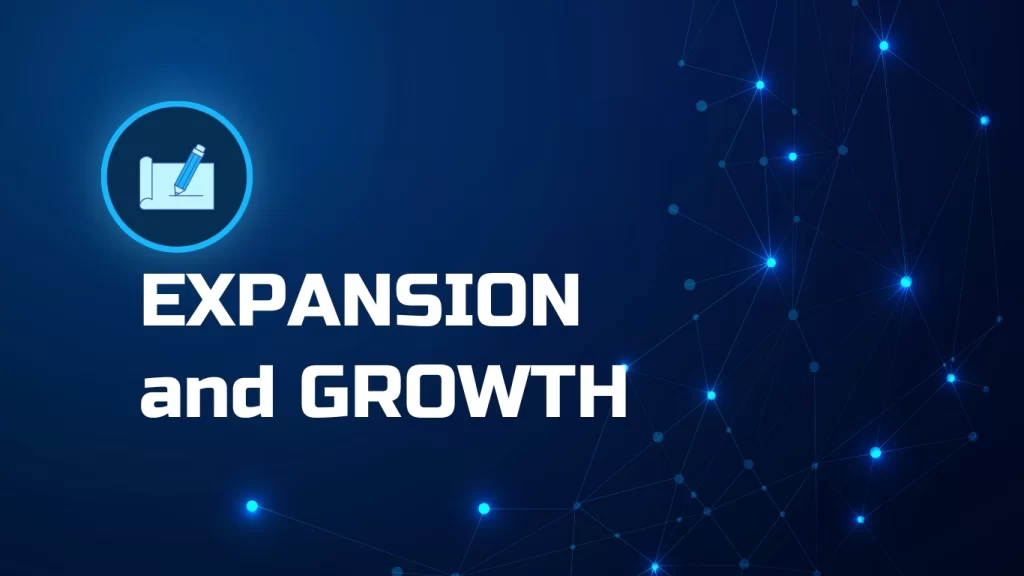
The extension of IoT into smart cities and infrastructure entails integrating linked technology to improve urban living, efficiency, and sustainability.
Key features include:
Traffic Management:
IoT sensors and cameras track traffic flow, optimize signal timing, and give real-time data to improve traffic management.Smart Parking: Sensors and apps assist drivers in finding parking spaces effectively, reducing traffic congestion, and improving parking management.
Public safety and surveillance:
Video Analytics: IoT cameras equipped with video analytics improve public safety by detecting anomalies, monitoring crowds, and assisting law enforcement.
Emergency Response Systems:
IoT devices help to speed up emergency responses by monitoring and communicating in real time.
Smart Bins:
IoT-enabled garbage bins optimize collection schedules based on fill levels, lowering operational costs and increasing efficiency.
Recycling Monitoring:
Sensors assist in tracking and optimizing recycling efforts, boosting environmentally friendly waste management methods.
Energy-Efficient Lighting:
IoT-enabled streetlights adjust brightness in real time, saving energy and money.
Remote Control:
Centralized control of lighting infrastructure enables efficient management and rapid reaction to concerns.
Air Quality Sensors: Internet of Things devices monitor air quality, providing data for pollution control and public health.
Weather Monitoring:
Sensors contribute to real-time weather data, which helps with disaster preparedness and urban planning.
Water Management:
Smart water grids use IoT sensors to identify leaks, monitor water quality, and optimize water distribution, thereby enhancing water resource management.
Flood Monitoring:
Sensors monitor water levels and provide early warnings of prospective flooding events.
Data-Driven Planning:
IoT data enables city planners to make informed decisions about infrastructure construction and expansion.
Predictive Maintenance:
IoT sensors on critical infrastructure enable predictive maintenance, which reduces downtime and increases reliability.
Energy Management:
IoT devices in buildings improve energy use while increasing efficiency and lowering environmental effects.
Occupancy Monitoring:
Sensors control lighting, heating, and cooling according to occupancy, improving comfort and resource efficiency.
The integration of IoT into smart cities promotes a more sustainable, connected, and efficient urban environment, addressing difficulties while improving citizens’ overall quality of life.
Integration of AI and Machine Learning in IoT Systems
The integration of artificial intelligence (AI) and machine learning (ML) in IoT systems improves the capabilities of connected devices, allowing for more intelligent and autonomous decision-making.
Key features include:
Predictive analytics:
Forecasting: AI and ML algorithms use historical and real-time IoT data to forecast future trends, equipment failures, and system anomalies, allowing for proactive decision-making.
Anomaly detection:
Identifying aberrant patterns: AI algorithms can discover strange patterns or deviations in IoT data, assisting in the detection of potential security threats, equipment faults, or aberrant behavior.
Optimization of operations:
Automated Decision-Making: ML models use data from IoT sensors to make real-time decisions that optimize operations like manufacturing, shipping, and energy consumption.
Personalized recommendations:
User Behavior Analysis: AI algorithms analyze IoT device data to deliver personalized recommendations and improve user experiences.
Natural language processing (NLP):
Speech and Text Interactions: By integrating NLP into IoT devices, users may communicate with them via speech or text, improving user interfaces and accessibility.
Edge computing and AI:
Local Processing: AI at the edge enables local data processing on IoT devices, lowering latency and eliminating the need for continuous data transmission to centralized servers.
Dynamic Resource Allocation:
Adaptive Systems: Machine learning techniques dynamically distribute resources in IoT networks, optimizing bandwidth utilization and enhancing overall system performance.
Behavioral Analysis:
User and Device Activity Monitoring: AI examines patterns of user and device activity to discover abnormalities or potential security risks, hence improving overall system security.
Energy efficiency:
ML models can forecast energy usage patterns in IoT devices, allowing them to consume less power and last longer.
Continuous Learning:
Adaptive Systems: ML models can adapt and learn from new data over time, hence increasing the accuracy and efficacy of IoT applications through continuous learning.
The integration of AI and ML with IoT systems not only adds intelligence to data processing but also allows devices and networks to learn and adapt to changing situations, thereby enhancing efficiency, security, and performance.
Growth of IoT in agriculture and environmental monitoring
The proliferation of IoT in agriculture and environmental monitoring has resulted in substantial progress, boosting efficiency, sustainability, and resource management.
Key features include:
The Internet of Things in Agriculture:
Precision Farming:
IoT sensors monitor soil conditions, moisture levels, and nutrient content, allowing for more precise and data-driven irrigation and fertilization decisions.
Crop Monitoring:
Remote sensing using drones and IoT devices delivers real-time crop health data, allowing farmers to detect diseases, pests, and other issues early.
Livestock Monitoring:
Wearable technologies for livestock monitor health indicators, location, and behavior, assisting in early illness identification and optimizing breeding and feeding methods.
Automated farming equipment:
IoT-enabled tractors and machines use data to automate planting, harvesting, and other farming tasks.
Supply chain optimization:
IoT enables the tracking and monitoring of products from farm to market, ensuring freshness, decreasing waste, and increasing supply chain efficiency.
Weather Monitoring:
IoT sensors and weather stations provide real-time weather data, allowing farmers to plan and adjust their activities based on current conditions.
Smart greenhouses:
IoT devices in greenhouses regulate environmental elements such as temperature, humidity, and light, resulting in ideal circumstances for plant growth.
Market Access and Pricing:
Farmers may use IoT to access market information, pricing patterns, and demand forecasts, allowing them to make more educated decisions about crop selection and sales timing.
IoT for Environmental Monitoring:
Air quality monitoring:
IoT sensors monitor air quality indicators, providing information for pollution management, public health, and regulatory compliance.
Water Quality Management:
IoT devices monitor water quality indicators to ensure safe drinking water, protect aquatic habitats, and promote sustainable water use.
Biodiversity Monitoring:
Remote sensors and Internet of Things technologies aid in the monitoring and protection of biodiversity by tracking animal migrations, plant species, and ecosystem health.
Wildlife Conservation:
IoT-enabled gadgets help track and research wildlife behavior, helping conservation efforts and reducing human-wildlife conflict.
Disaster Early Warning Systems:
IoT sensors collect real-time data to monitor natural disasters like floods, earthquakes, and wildfires, allowing for early warning systems and disaster preparedness.
Smart waste management:
IoT devices in waste bins enhance collection schedules, lowering fuel use and increasing waste management efficiency.
The growing use of IoT in agriculture and environmental monitoring reveals its potential to transform these industries, making them more sustainable, data-driven, and resilient.
CONCLUSION
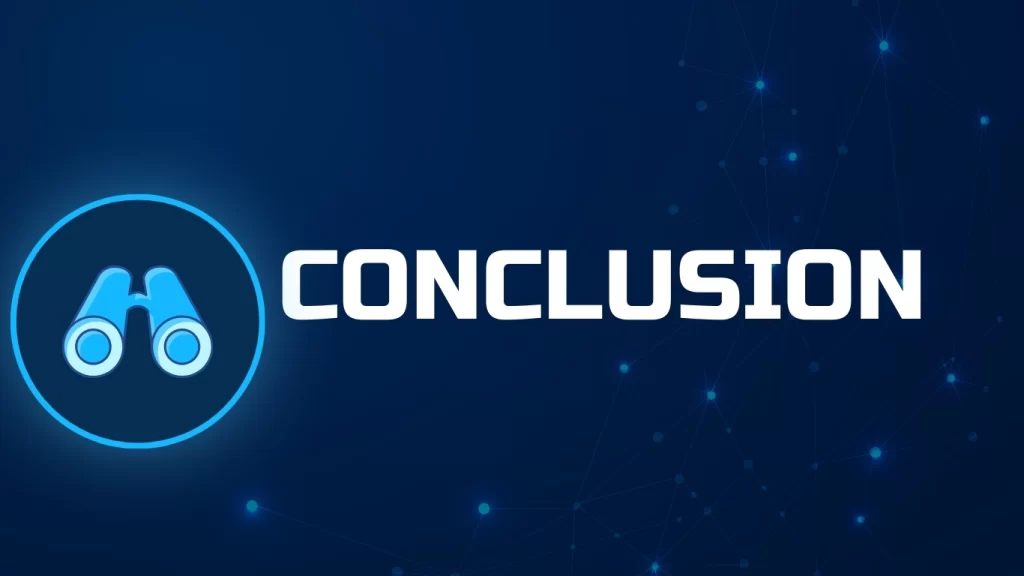
Finally, the Internet of Things (IoT) has transformed many aspects of our lives and industries. From smart homes and linked gadgets to precision agriculture and environmental monitoring, the Internet of Things has ushered in a new era of connectedness, efficiency, and data-driven decision-making.
In the world of smart homes, IoT technologies provide increased convenience and automation by allowing users to control and monitor their environments remotely.
Wearable gadgets in healthcare provide individualized insights and support a proactive approach to well-being.
Meanwhile,
In the industrial sector, Industrial IoT (IoT) and Industry 4.0 are transforming production processes, optimizing operations, and encouraging smarter, more connected factories. Looking ahead, the integration of artificial intelligence (AI) and machine learning (ML) with IoT systems promises to improve the intelligence of connected devices. This combination enables predictive analytics, anomaly detection, and dynamic resource allocation, bringing new levels of sophistication to IoT applications.
In industries such as agriculture and environmental monitoring
IoT is critical for precision farming, crop monitoring, and resource optimization. The data collected by IoT sensors helps inform decision-making, promoting sustainable behaviors and resilience in the face of environmental difficulties. These technological breakthroughs have the potential to transform industries, cities, and the way we interact with our surroundings.
In essence, the rise of IoT symbolizes a paradigm shift toward a more connected, intelligent, and efficient society. This trip, however, is not without its hurdles, which include security concerns, interoperability issues, and ethical considerations.
The importance of comprehensive studies on IoT
In conclusion, extensive studies on the Internet of Things (IoT) are critical for the following reasons:.
Rapid Evolution:
The Internet of Things is a quickly evolving field with ongoing technological improvements. Comprehensive studies enable professionals and researchers to stay current on the newest advancements.
The IoT is multidisciplinary in nature, involving computer science, electronics, telecommunications, and data analytics. In-depth investigations promote the holistic understanding required for effective implementation.
Industry Transformation:
The IoT is altering industries such as healthcare, agriculture, manufacturing, and smart cities. Comprehensive studies shed light on the practical applications and benefits of various areas.
Innovation and Development:
In-depth knowledge drives innovation. Comprehensive investigations help to develop new technologies, applications, and solutions that meet current difficulties and increase efficiency. The IoT presents substantial security and privacy challenges. In-depth research is required to detect vulnerabilities, establish strong security measures, and address ethical concerns related to IoT installations.
Networked systems:
Because IoT encompasses networked devices and systems, extensive research is required to comprehend the complexities of interoperability, communication protocols, and data exchange standards. The integration of data analytics and artificial intelligence with the IoT is a major trend. In-depth studies look at how various technologies work together to provide relevant insights and improve decision-making.
Global Connectivity:
The Internet of Things has the potential to create a globally connected world. In-depth research helps to understand how IoT might transcend geographical gaps, stimulate global innovation, and contribute to sustainable development.
Here’s some encouragement for anyone entering this vibrant field:
Impactful Solutions:
The Internet of Things has the potential to transform industries and improve people’s lives. By delving into research and innovation, you can build solutions that benefit individuals, businesses, and entire communities.
Pioneering the Future:
The IoT ecosystem is still changing, and there is plenty of potential for innovators and trailblazers. Your contributions could help define the future of technology by affecting how we live, work, and interact with the digital world.
Addressing Global Challenges:
The IoT has the ability to address critical global issues such as climate change, healthcare inequities, and resource management. Your study could result in inventions that help us build a more sustainable and resilient world.
Collaboration Opportunities:
The IoT is fundamentally interdisciplinary, necessitating collaboration across disciplines. Engaging in research allows you to collaborate with professionals from other fields, creating a rich and collaborative environment.
Job Market Demand:
As IoT becomes more integrated across businesses, there will be an increased demand for trained workers. Engaging in research prepares you for intriguing career options in academia, industry, and research organizations.
Solving real-world problems:
IoT research provides a platform for addressing actual difficulties and developing solutions that have a measurable impact. Your innovations may have a direct impact on increasing efficiency, security, and technological capabilities.
Global Connectivity:
The Internet of Things has the potential to connect the world in unprecedented ways. Your study could help us create a more connected and collaborative global community.
Closing thoughts on the potential impact of IoT on society and the economy.
As IoT technologies advance, they hold the promise of creating a more connected, efficient, and intelligent world.
Here are some final comments about the potential impact:
The IoT has the potential to alter industries ranging from healthcare and agriculture to manufacturing and logistics. Businesses may increase their efficiency, productivity, and innovation by leveraging real-time data insights and automation.
Enhanced Quality of Life:
Smart homes, wearable devices, and personalized services powered by IoT let people live better lives. From healthcare monitoring to smart city comforts, IoT technologies seek to make daily living more comfortable and smooth.
Economic Growth:
The broad adoption of the Internet of Things is predicted to drive economic growth. Industries that embrace IoT advances will gain a competitive advantage, create new job possibilities, and boost economic growth.
Sustainable behaviors:
IoT solutions for environmental monitoring, smart agriculture, and energy management help to promote sustainable behaviors. IoT can contribute significantly to a more sustainable future by optimizing resource consumption, decreasing waste, and increasing efficiency.
Improved Public Services:
Smart city efforts use IoT technology to improve public services, transit systems, and urban planning. As a result, governance becomes more effective, resources are better allocated, and overall city life improves.
Healthcare Revolution:
Remote patient monitoring, individualized treatment regimens, and enhanced diagnostics are all examples of the Internet of Things’ impact in healthcare. These innovations not only improve patient care but also help to make healthcare systems more efficient.
Global Connectivity:
IoT promotes global connectivity, removing geographical limitations. The interconnection of devices and systems allows for worldwide collaboration, which facilitates innovation and information sharing across borders.
Continuous Evolution:
The potential influence of IoT is dynamic; it will develop as technology advances. AI, machine learning, and networking advancements will increase IoT capabilities, creating new opportunities for exploration and growth.


